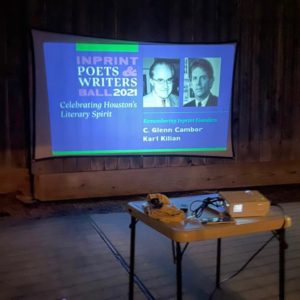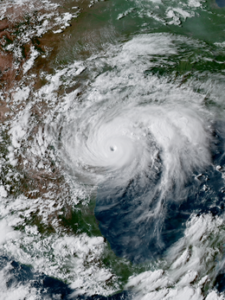The 2021 Inprint Poets & Writers Ball celebrates Houston’s literary spirit with George Saunders and others
February 25, 2021, by Inprint Staff
Although writing and reading are solitary and quiet acts, the 2021 Inprint Poets & Writers Ball—Inprint’s annual fundraising gala which went virtual this year—was a festive, engaging, collective, and inclusive experience, especially for those passionate about sustaining Houston’s literary arts scene. More than $280,000 was raised, surpassing the fundraising goal by close to 20%, thanks to the generosity of 250 donors who tuned in from all over the country on Saturday, February 6.
Raising funds to support Inprint programs, while delivering a memorable and high-quality evening that celebrates the power of creative writing and reading, has always been at the heart of the unique annual black-tie event and what has made the Inprint Ball a favorite gala for many patrons. Although the Inprint Ball looked a little different this year, gala supporters and their guests were able to enjoy the festivities from home.
 The presentation portion of the evening began at 7:30 pm CST featuring welcome remarks by Inprint Board President Marcia West, followed by a video tribute in memory of recently departed Inprint founders Glenn Cambor and Karl Kilian. This was followed by what is often a beloved part of the evening for many attendees—a series of short readings by Inprint fellowship and prize recipients, all of whom are MFA and PhD students and alumni from the University of Houston. Five Inprint fellows, including Raquel Abend van Dalen, Lauren Berry, Matthew Salesses, Novuyo Rosa Tshuma, and Sasha West, each read excerpts from their new work and spoke about how Inprint’s support has impacted their writing life. Continue reading
The presentation portion of the evening began at 7:30 pm CST featuring welcome remarks by Inprint Board President Marcia West, followed by a video tribute in memory of recently departed Inprint founders Glenn Cambor and Karl Kilian. This was followed by what is often a beloved part of the evening for many attendees—a series of short readings by Inprint fellowship and prize recipients, all of whom are MFA and PhD students and alumni from the University of Houston. Five Inprint fellows, including Raquel Abend van Dalen, Lauren Berry, Matthew Salesses, Novuyo Rosa Tshuma, and Sasha West, each read excerpts from their new work and spoke about how Inprint’s support has impacted their writing life. Continue reading


 This January Inprint continues offering
This January Inprint continues offering  On Monday, September 11,
On Monday, September 11,  On March 6th, George Saunders made his third appearance with the Inprint Margarett Root Brown Reading Series, in order to celebrate a first—his only novel,
On March 6th, George Saunders made his third appearance with the Inprint Margarett Root Brown Reading Series, in order to celebrate a first—his only novel,  Novelist and Director of the University of Houston Creative Writing Program Alex Parsons interviewed Saunders, whose humane wit set the tone for the evening. “We’re just a couple of guys in the forest at night,” he said, settling into a chair wedged between the scenery.
Novelist and Director of the University of Houston Creative Writing Program Alex Parsons interviewed Saunders, whose humane wit set the tone for the evening. “We’re just a couple of guys in the forest at night,” he said, settling into a chair wedged between the scenery. 

